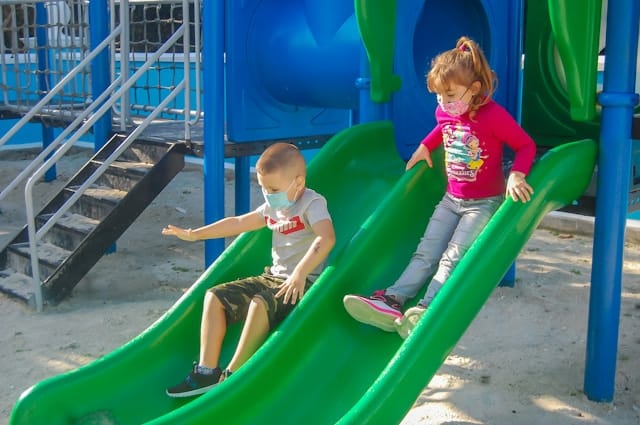How to Create a Safe Indoor Play Area for Toddlers in a Small Apartment?

Living in a small apartment doesn’t mean you can’t create a safe and fun play space for your toddlers. In fact, with careful planning, the right toys, and some creative design, you can transform even the smallest corners of your home into a vibrant playroom that your child will absolutely love. Here, we will guide you through the process.
We’ll discuss selecting the right spot, choosing safe play equipment and toys, utilizing functional design, and ensuring the play area is safe for your child. Let’s dive in!
Lire également : How to Create an Indoor Herb Garden in a Kitchen with No Windows?
Identify the Ideal Spot
The first step in creating a toddler-friendly play area is identifying the perfect spot. This might feel challenging given the limited space in your apartment, but remember, even a small corner can become a magical playroom with a bit of creativity.
Consider spaces that are often underutilized, like a corner in the living room, a spot under a stairwell, or even a segment of your child’s bedroom. Verify the area is not close to dangerous items such as heaters, sockets, or sharp-edged furniture. The spot should be easily visible for you to supervise play, well-ventilated, and with enough natural light.
A voir aussi : What Are the Top Stylish and Functional Ceiling Storage Solutions?
Choosing Safe Play Equipment and Toys
Once you’ve secured the perfect spot, it’s time to fill it with toys and play equipment that will foster your child’s development and creativity.
Choosing appropriate toys for toddlers involves more than just picking out what looks fun. You need to take into consideration the safety and appropriateness of the toy for your child’s age. Avoid toys with small parts that could pose a choking hazard, sharp edges, or those made from toxic materials.
Equipment should be age-appropriate and sturdy enough to withstand the vigorous energy of toddlers. Consider investing in a small indoor slide, a mini trampoline, or a climbing frame. Remember to place cushioning materials such as foam mats or carpet under the equipment to prevent injuries from falls.
Implement a Functional Design
There’s no need to compromise on aesthetics when designing a playroom. Even a small play area can be decorated in a way that is both appealing to your child and harmonious with the rest of your home décor.
Try using furniture that doubles as storage space for toys, like ottomans or benches with hidden compartments. Install shelves to hold books and toys, keeping them within your child’s reach. Consider using a colorful rug or floor cushions to define the play area.
The walls can be decorated with wall decals, posters, or your child’s artwork. Remember, the play area is not just a place for your child to play, but also a space where they can learn and grow.
Ensure Safety Above All Else
The most crucial aspect of an indoor play area is safety. With your child’s safety in mind, you should childproof the playroom and the surrounding areas.
Be sure to secure all furniture to the wall to prevent tipping. Cover all electrical outlets and ensure there are no dangling cords that your child might pull or trip over. Keep the area free of small objects that your child could swallow.
If your play area is not in a separate room, consider using a safety gate to stop your child from wandering off. Regularly check the playroom for possible hazards and maintain the cleanliness of the area to prevent the spread of germs.
In conclusion, creating a safe, fun, and educational indoor play area in a small apartment is not as daunting as it might initially seem. With some creativity and careful planning, even the smallest spaces can be transformed into a child’s paradise. Your child will have a place to explore, learn, and play, while you will have peace of mind knowing they are safe. So, roll up your sleeves and start planning. Your child’s perfect playroom is just a few steps away!
Integrating Educational Elements
Creating a safe and fun indoor playground is just the first step. Beyond that, you must ensure that the play space also facilitates the learning process for your toddler. With the right tools and resources, you can transform your child’s play area into a conducive learning environment.
Start by incorporating a variety of toys that promote motor skills development. Building blocks, push and pull toys, sorting and stacking toys, and puzzles are excellent choices. These toys will help to improve your child’s fine and gross motor skills, cognitive abilities, and spatial awareness.
Books are another essential element to include in the play area. Reading to young children stimulates their imagination, expands their understanding of the world, and helps them develop language and listening skills. Make sure to keep a variety of books within your child’s reach.
Consider integrating tech tools into the play area, such as tablets pre-loaded with educational apps to help your child learn alphabets, numbers, shapes, and colors. However, remember that screen time should be limited for toddlers.
Incorporate sensory play elements, such as a sand and water table, play dough, or sensory bins filled with different materials. Sensory play can help toddlers to develop their senses and enhance their learning experience.
Maintenance and Upgrades
Maintaining the cleanliness and safety of the play area is crucial. Regularly clean the play area with child-friendly products to keep it free from germs. Toys and play equipment should also be cleaned and disinfected regularly.
Periodically inspect the playground equipment for wear and tear. Replace any broken or damaged toys or equipment immediately to prevent any accidents.
As your child grows, their interests and needs will change. Therefore, the play area should also evolve to meet their changing needs. Upgrade the toys and equipment in the play area according to your child’s age, interests, and abilities. Consider introducing more complex toys and games to challenge your child and promote their cognitive development.
Conclusion
Creating an indoor playground in a small apartment can be a fun and rewarding project. Not only will you provide your young children with a safe and exciting play space, but you will also create a vibrant learning environment that will foster their development.
By carefully selecting the ideal spot, choosing safe and stimulating play equipment and toys, implementing a functional and aesthetically pleasing design, prioritizing safety, incorporating educational elements, and maintaining and upgrading the play area regularly, you’ll create an indoor play area that your child will cherish.
In conclusion, remember that the ultimate goal is to create a play area that makes your child feel loved, secure, and stimulated. With a bit of creativity and planning, you can make the most of your small living space and provide your child with the ideal indoor play area. So, don’t let the size of your apartment restrict your vision. Your child’s perfect playroom is just a few steps away!
